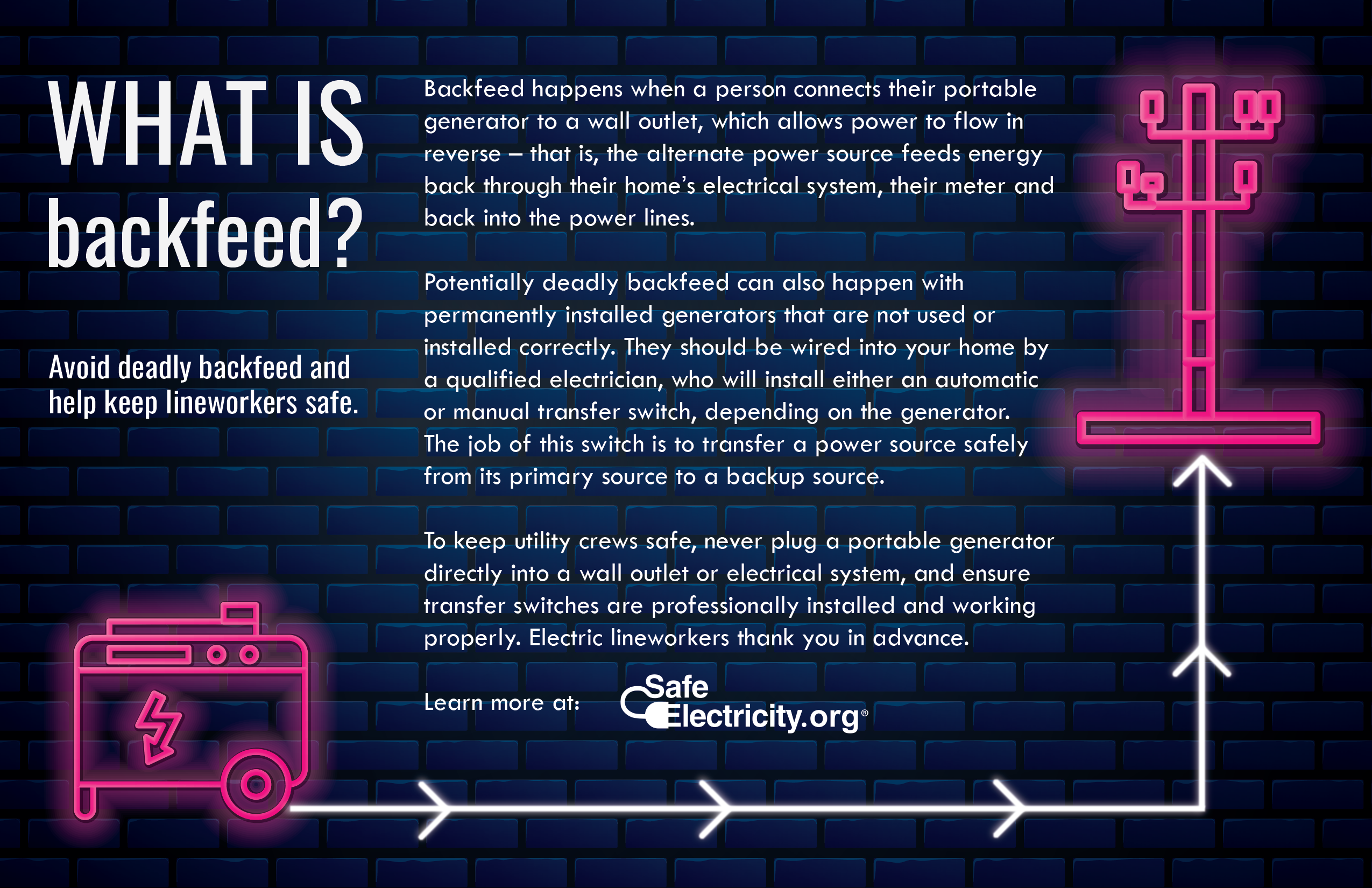⚠️ DO NOT CONNECT A BACKUP POWER SOURCE (GENERATOR) TO YOUR HOME’S ELECTRICAL CIRCUITS WITHOUT A BCEC-APPROVED TRANSFER SWITCH INSTALLED BY A LICENSED ELECTRICIAN!
Before You Install a Backup Generator
If you are considering adding a backup generator to your home or business, you must contact Big Country Electric Cooperative (BCEC) at 325-776-2244 before installing it.
Types of Backup Generators
Portable Generators
Portable generators are gas-powered and must never be connected directly to household wiring. Use extension cords to power individual appliances.
Portable Generator Safety Tips:
- Proper Grounding: Ensure the generator is grounded.
- Keep It Dry: Operate in a dry, ventilated area.
- Use Safe Extension Cords: Only use three-pronged, heavy-duty cords.
- ⚠️ Never run a generator indoors! Carbon monoxide poisoning can be deadly.
Standby Generators
Standby generators are permanently installed and require a transfer switch to prevent backfeeding.
Why a Transfer Switch is Required
Backfeeding power onto BCEC’s system can be deadly to linemen and damage your home.
- Disconnects your home from BCEC’s power lines.
- Prevents electricity from feeding back into the grid.
- Protects appliances from power surges.
Generator Maintenance & Operation
- Test Monthly: Run for at least 10 minutes.
- Store Fuel Safely: Keep fuel in approved containers.
- Maintain 24-Hour Fuel Supply: For extended outages.
Member Responsibility & Liability
Members are responsible for ensuring safe installation and operation. BCEC is not liable for damages due to improper generator use.
Contact BCEC
For generator approvals or safety questions, call 325-776-2244.


